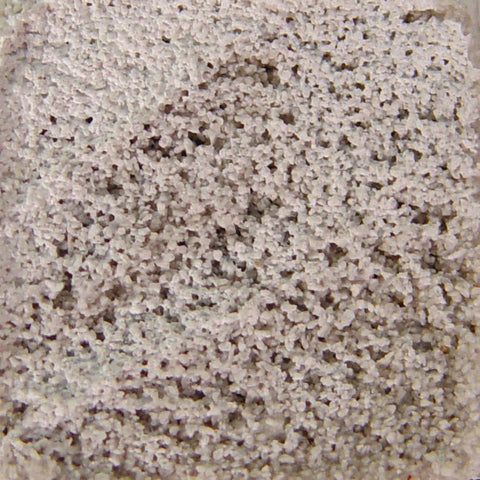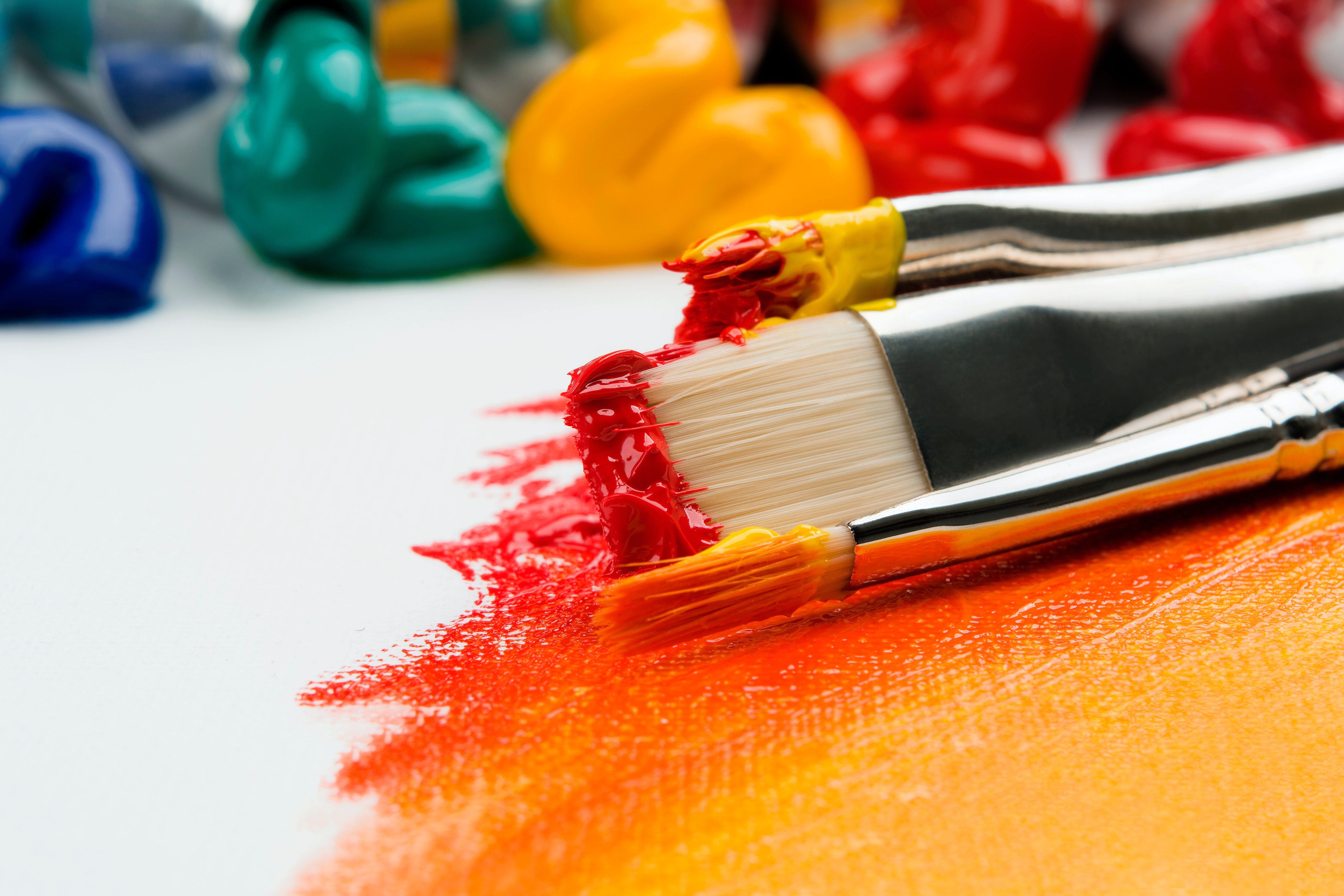Thanks to wonderful companies like Golden Paints, the world of acrylic mediums has become a vast and sometimes confusing place. Our aim here is to simplify the basic options in acrylic mediums to help you make the best choices for your artistic needs.
What Is a Medium?
Generally speaking, a medium is something you mix directly into your paint to extend the overall volume and coverage. Applied on their own, most mediums start out milky white but will dry crystal clear. A common misconception about acrylic mediums is that they slow the drying time of your paints. Most of the time, any increase in drying time you may experience is coincidental. There is a specific product that slows the drying time of acrylics (called retarder; we'll talk more about that later)
Grounds vs. Mediums
Often times, acrylic grounds are referred to as mediums. A ground is generally something that is applied to the painting surface first, before you paint (such as gesso or molding paste). Grounds generally dry to an opaque white, but can be tinted with colour. For the sake of simplicity, we are going to omit the chalky-white grounds and focus on clear-drying mediums, and what useful properties each posses.
Why Use Mediums?
All of us have mixed water into our acrylic paints at some point, and it worked well enough, so why spend money on mediums when water will do?
Here are a few arguments why water is less than ideal as a paint medium:
- Clots: Although it contains some water, acrylic polymer emulsion doesn't readily accept more water. Water needs to be thoroughly mixed-in to avoid 'gobs' of saturated colour.
- Reduced Integrity: The act of 'thoroughly mixing-in water' can actually break down the acrylic emulsion. Acrylic emulsion is the binder in acrylic paint, and without its integrity, there is nothing left to hold the pigment in place on your canvas. If acrylic paint is diluted more than 20% with water, it can leave you with a dull, dry (and often dusty) layer of colour that will begin to lift as you apply more acrylic over top.
- Workability: adding water ruins the smooth feel and the "body" of naturally viscous acrylic paint. (Which is to say it drastically thins your previously thick paint, literally dissolving it, creating thin and potentially unstable layers.)
Use Mediums & Save Money!
I was lucky enough to attend a workshop taught by Patty Brady (the professional artist responsible for helping Golden Paints develop into the amazing line of products it is today). She offered an excellent piece of advice: As we all know, professional acrylic colours are not cheap, however mediums are comparatively inexpensive - you will get up to twice the mileage out of your expensive colours by utilizing mediums. In fact, all Golden colours are meant to be mixed with a medium, not to be used straight out of the tube! Because Golden is so heavily pigment-loaded, you can dilute up to 1:1 with medium and it will NOT increase the transparency, you'll still get the same beautiful saturation and coverage.
It's bloody magical, really. That one piece of advice forever changed the way I work (and spend) and I couldn't be more grateful! Try it for yourself: put a heaping teaspoon-worth of gel medium on your palette, drip a few drops of Golden fluid acrylic on top, and mix in... Voila! You just made 1ml of paint cover an 8" square!
In the example below, I used a teaspoon of medium and 4 drops of Teal (Golden Fluid) and it covered almost a full sheet of paper!

Acrylic Mediums can be loosely organized into 3 categories:
- Fluids
- Gels
- and Additives
FLUIDS
If you wish to thin the body of acrylic paint, then you'll want to have a closer look at the fluid mediums. Fluid medium thins and extends without sacrificing the viscosity and the integrity of the paint film. Fluid mediums are pourable and have a consistency ranging from thick (like liquid whipping cream from the carton) to thin (like 2% milk) depending on the specific product and manufacturer.
Gloss vs. Matte Medium
Gloss medium will increase the sheen while matte medium will decrease the sheen (the active ingredient in matte medium is a particulate that can significantly dull the vibrancy of your colours, so its recommended to do a test first)
Glazing Mediums

Glazing medium is a wonderful tool for achieving the look of oil paint using regular acrylic paints. Glazing fluid is ideal for creating thin, strong, flexible films of transparent colour over larger areas. Glazing medium can be poured or applied with a brush and features self-leveling properties (which means that all brush strokes will smooth over, blending together seamlessly). Glazing medium can be added to colours on the palette (just like any standard medium) with the added feature of eliminating brushstrokes for seamless blending. Contrary to what I said earlier about drying times, this particular medium will slow drying time (somewhat) which enables you to achieve oil-painterly techniques. Glazing fluid is available in Gloss or Satin.
Special Purpose Fluid Mediums
Fabric Medium
This medium decreases viscosity and increases film integrity, allowing you to paint with acrylics on textiles without experiencing stiffening or cracking. Mix with High Flow Acrylics to produce "tie-dye" effects, or blend with any heavy body or fluid acrylic for paintbrush and/or silkscreen applications. Must be heat-set with an iron before laundering.
If you intend to spray acrylics on fabric, see the next product below...
Airbrush Medium
This medium is intended for use with fluid acrylics for spray application. Airbrush medium reduces tack and decreases clogging and tip buildup during spraying. It's the recommended product for spray painting on textiles. This medium can also be used to thin other products for spraying such as Gesso. NOTE: Airbrush Medium is NOT designed to mix with High Flow Acrylics (Use Airbrush Transparent Extender).
Transparent Airbrush Extender
Increases the transparency and film hardness of High Flow Acrylics. This medium can be added in any ratio desired allowing for precise control of transparency.
GELS

Acrylic gels offer many ways to build texture, create thick glazes, extend paint and change finishes. Gel mediums are generally thick, and not pourable. Gels are essentially colorless paint, as they utilize the same 100% acrylic polymers as heavy body acrylic paint. Gels also serve as excellent adhesives for decoupage and other mixed media applications. Once dry, gels are flexible and feature strong resistance to chemicals, water, and UV. Gel mediums are generally available in gloss or matte (Golden offers gels in a semi-gloss option as well). The consistency of gels vary from very thick (like mayonnaise - holding deep textures)...
...to runny (like syrup or honey - with high tack and self-leveling properties).

Golden has developed 5 families of gels, each with a different consistency.
For more info on these gels, click here
Isolation Coat: One of the most important jobs a gel medium can perform is to provide an isolation coat. An isolation coat is a layer of clear acrylic that is applied to the entire surface of your painting prior to varnishing. If your artwork is ever exposed to smoke damage or abrasion and is taken to a conservator, or if the varnish needs to be removed for any reason, this layer protects the painting itself, providing a buffer from potential damage resulting from removing and reapplying varnish.
Specialty Textured Gels
Gels are now available with alternative materials already added-in for extra texture. Here are two examples:
Glass Bead Gel
This gel is packed full of tiny glass balls, about the size of poppyseeds. Once dry, it has a similar texture to fish scales....
Pumice Gels
Available in fine, coarse or extra-coarse, these gels create gritty, absorbent, textured surfaces. Unlike all the other mediums we have looked at thus far, pumice gels dry hard with a grayish colour (which comes from the ground volcanic rock they contain). While generally opaque, these gels contain only clear acrylic gel and ground pumice. Fine pumice gel is an excellent ground for charcoal, graphite and pastel. All Pumice Gels have an absorbent quality that works well as a ground, or blended-in with acrylic colours.
ADDITIVES
Acrylic mediums control the transparency, viscosity and surface sheen, while additives control paint’s working properties. Here are two additives worth getting familiar with:
Flow Release
This medium (sometimes called Flow Improver) is an additive used to reduce surface tension of the water in the acrylic emulsion, thereby increasing the slickness and flow of the paint. It is effective for achieving rich stains on a porous surface. If you love watering-down your paints, this medium will be your new best friend. This medium (liberally added) will turn acrylics into something that looks, feels, and acts like watercolours (while still maintaining film integrity).
Retarder
This is an additive used to increase the open (drying) time of acrylic paints. Useful for wet in wet techniques and reducing skinning on paint portioned out on the palette. Retarder is a thin bodied additive so when it's added to heavy body paint it will soften and thin the consistency.
Other Uses for Mediums
Paint-Making
Mediums can also be used to create acrylic paints from scratch using powdered pigments. Simply add medium to dry pigment, and mix-in thoroughly. Continue adding pigment until you've reached your desired consistency. (Or, try experimenting with colour and texture by adding alternative materials such as fine sand, coffee grounds, seeds, or even sawdust!)
Collage & Decoupage
Acrylic mediums are also an excellent tool for collage or decoupage. Fluid mediums will act as both an adhesive and a sealant for collaging papers. Gel mediums are handy for adhering larger 3D objects (such as gemstones, sequins, leaves, twigs, or sea shells) to your project.
Well, we've covered the basics but these mediums are just the tip of the iceberg! So, please forgive me if I've omitted your favorite gel or medium - there just isn't space to mention them all (or this blog will become a book instead!) Thanks for joining us once again for a little education and inspiration!











